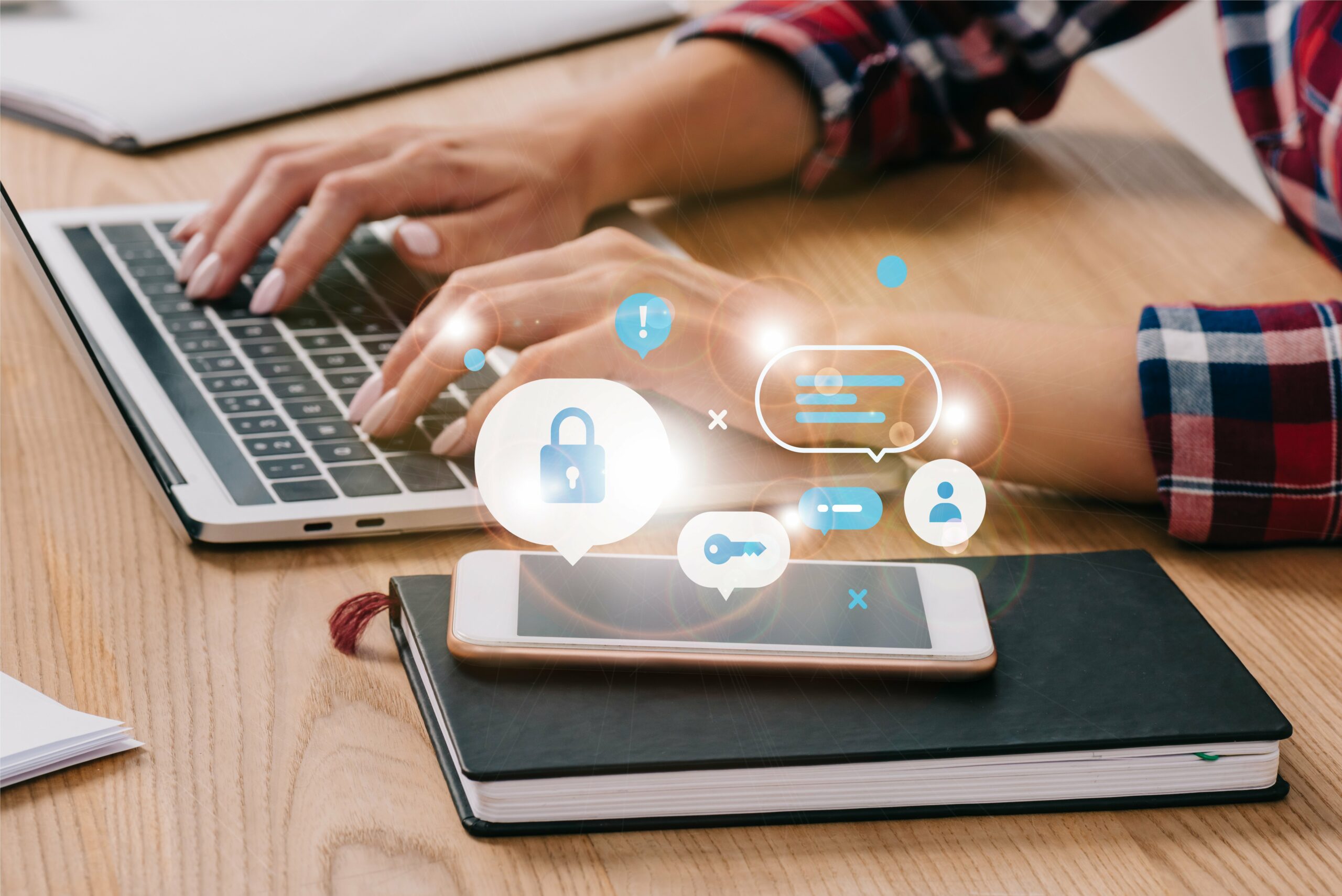The right cybersecurity strategy can protect your small business from cyber attacks. In the blog, we’ll cover 11 cybersecurity tips to help you secure accesses to your technology, use traditional (and proven) security measures, and modernize your approach to cybersecurity.

Protect your business from cyber attacks by securing how your team accesses technology.
Cybercriminals know that it’s much easier to get into your network through an employee. Because your users are already known, trusted, and have been given access to important information and systems, they can easily harm the business (deliberately or unintentionally).
Cybersecurity Tip #1: Provide security awareness training to your team
Teaching your team about the risks and threats of using technology helps them prevent cyber attacks. On-going security awareness training shifts your employees’ mindset, helping them recognize and avoid anything suspicious. A culture of security, driven by your management team and tested by your training, is the best way to make everyone responsible tech users.
Cybersecurity Tip #2: Improve your password security
About 80% of data breaches in 2019 involved compromised passwords. A compromised password not only grants access to the user’s account but can also lead a cybercriminal to other data on your network. With the right password security measures, you can minimize your exposure risk.
- Use long and memorable passwords. A complicated password isn’t always the most secure—length is the key. Passphrases, four or more random words grouped and used as a password, are ideal as they are easier for you to remember and harder for someone to crack. Plus, adding in a few special characters makes it stronger!
- Store passwords securely with password management. Providing a password management tool is often overlooked, but it can be an easy protection measure. Giving people a way to store their passwords allows them to keep their information secure and avoid using the same password across different services.
- Require multiple forms of identification. Multi-factor authentication (MFA), or verifying your identity with a password plus a second step, protects against cybercriminals logging in with a compromised password. Many services have MFA built-in to boost security, and it’s important to use it whenever possible.
Cybersecurity Tip #3: Limit access on a “need to know” basis
It’s important to restrict access to sensitive data to only those who need it. Limiting access to those who use it as part of their job reduces the risk of a cybercriminal gaining access to the data by compromising an employee’s account.
It also helps to have a clear and comprehensive “user” offboarding process to make sure all access is turned off appropriately. Cybercriminals often look for opportunities to exploit stale accounts, hoping no one is paying attention.
Cybersecurity Tip #4: Centrally manage access to cloud apps
By controlling and limiting access to your systems, you ensure only those with permission can get to them. But as you use more cloud tools, the number of accounts to secure grows.
Having a way to connect cloud applications, like with Azure Active Directory, gives you a better way to manage access to them. It enhances your security efforts while making it easy for your team to move between tools.
[Learn more about the benefits of Azure AD in this blog]
Protect your business from cyber attacks by using traditional, proven security measures.
Traditional security tools continue to have a place in your cybersecurity strategy.
Cybersecurity Tip #5: Keep your software updated
Security patches, or updates, are fixes to mistakes within software—like your computer’s operating system, core business applications, commonly-used third-party apps like Adobe, web browsers, and the software running on your network devices. Vendors release them to respond as they discover vulnerabilities. Failure to install these patches quickly may create an opening for a cyber attack.
Many small businesses struggle to patch vulnerabilities quickly because, without central management, they are manually installing updates with no oversight.
Patch management is a key aspect of overall security and dramatically reduces the risk of ad hoc patching processes. That’s why managed IT services offer a cost-effective solution to ensuring that your critical software stays up-to-date and protected.
Cybersecurity Tip #6: Cover the basics of network security
Proven network security tools, like firewalls, antivirus, secure VPN for remote access, stop threats from entering or spreading across your network. Even as many people work from home, these classic defense tactics remain essential for protecting your business. **Hint: keep reading. The next section addresses the new challenges of a distributed workforce.
Cybersecurity Tip #7: Plan for securely destroying data
Properly destroying data ensures it doesn’t end up in the wrong hands. For sensitive and confidential information, a computer recycling partner can handle secure data disposal and a certificate of destruction, documenting that you’ve taken the necessary steps to reduce the risk for exposure.
Privacy laws and industry regulations typically require this security measure and may audit your records.
Cybersecurity Tip #8: Implement Reliable Backups
No protection is bulletproof. A good backup and recovery plan provides a safety net by making electronic copies of your business’ data. You can recover from a ransomware attack using a backup taken before the infection. That means you get your data back without paying a cybercriminal to decrypt it!
To ensure you can quickly restore operations from malware or any unauthorized changes, you should regularly test your backups.
Cybersecurity Tip #9: Encrypt sensitive data
Employing data protection measures, like encryption, keeps data private. Whether stored on your laptops or shared in an email, encryption scrambles your data to prevent someone from reading it even if they gain access to it. Like reliable backups, it’s insurance against the possibility of an attack.
Protect your business from cyber attacks by modernizing your approach to cybersecurity.
While the traditional IT security tools are good at what they’re built to do, they aren’t enough anymore.
Cybersecurity Tip #10: Protect your computers from advanced threats
Traditional anti-virus software relies on a database of signatures (the fingerprint of known malware). Although excellent for detecting and removing known malware, it is ineffective with new malware (not yet added to the database) and variants of existing malware designed to stay undetected. Adding behavioral-based antivirus boosts your protection by blocking malware based on signs of malicious activity.
Cybersecurity Tip #11: Protect against advanced threats on the internet
With the number of online threats growing, you’ll want a way to block anyone from accessing a site that may cause harm (like with phishing sites that try to steal your password). After all, even a previously safe website can become a threat if compromised. DNS (or internet) filtering tools assess web content in real time to block anything suspicious.
And, because it’s cloud-based, you can protect your team even as they work from home.

Looking for more on how to protect again cyber attacks?
A cybersecurity partner has the experience and knowledge to help you effectively protect your organization from cyber threats.
Give us call to assess your cybersecurity strategy!



